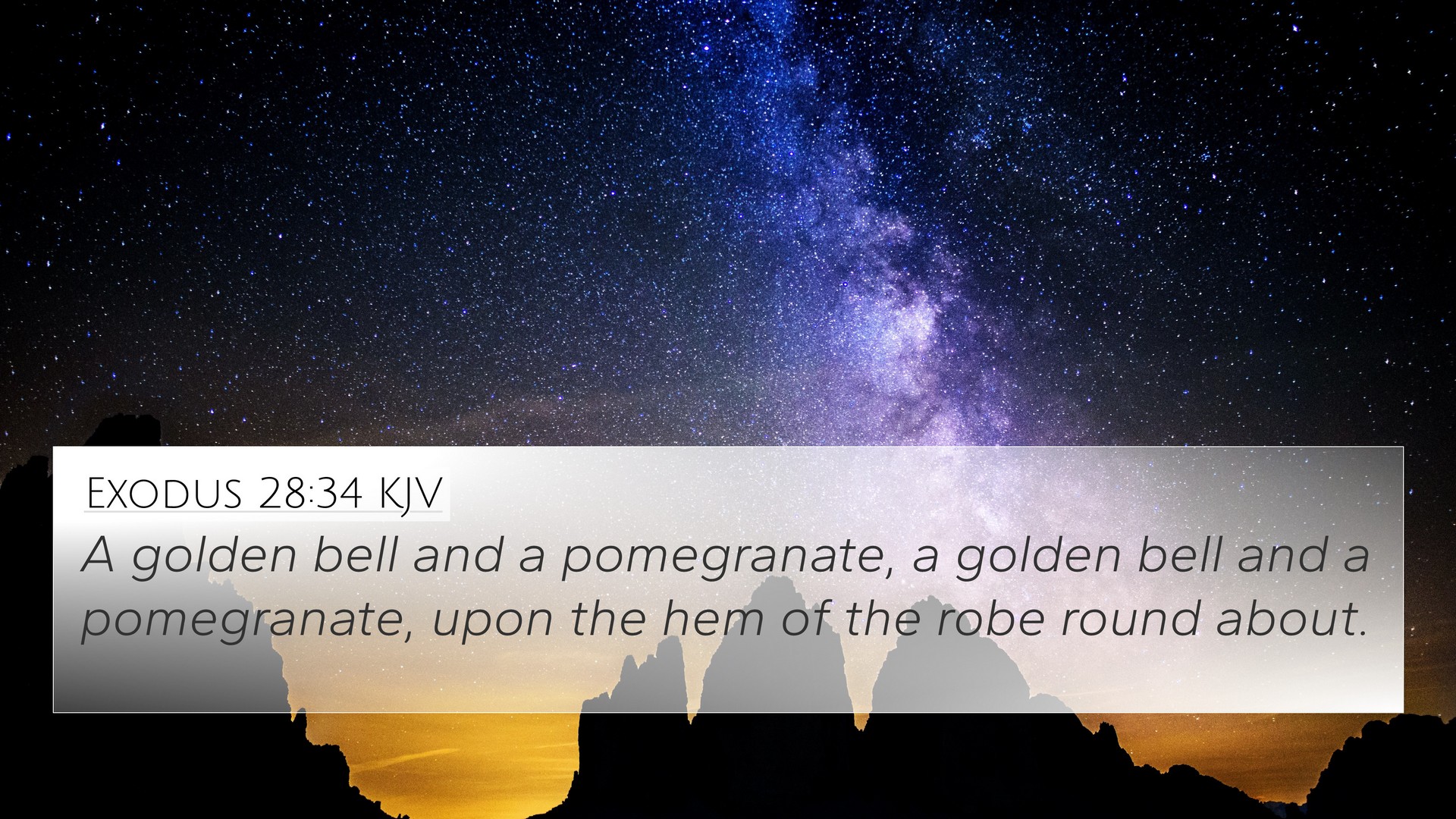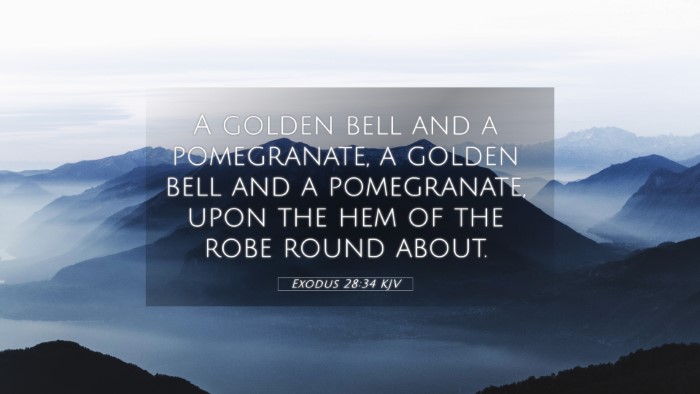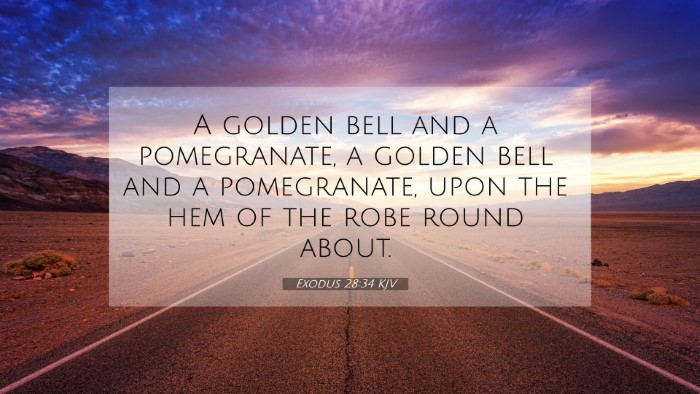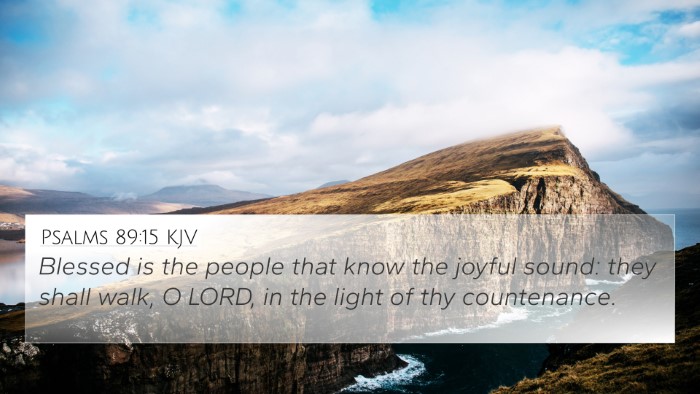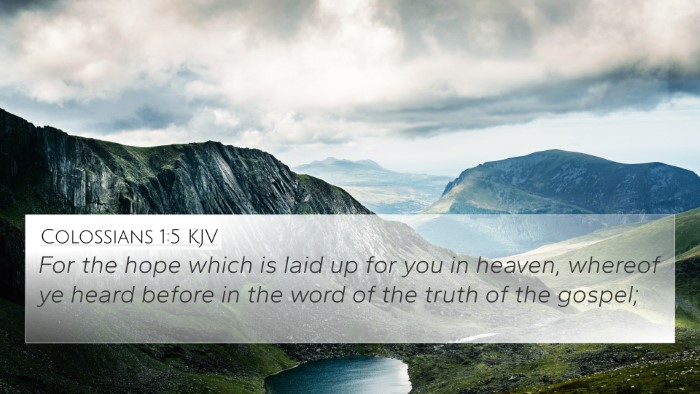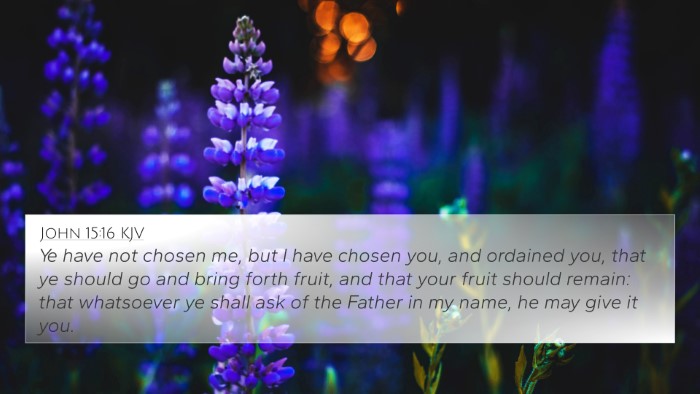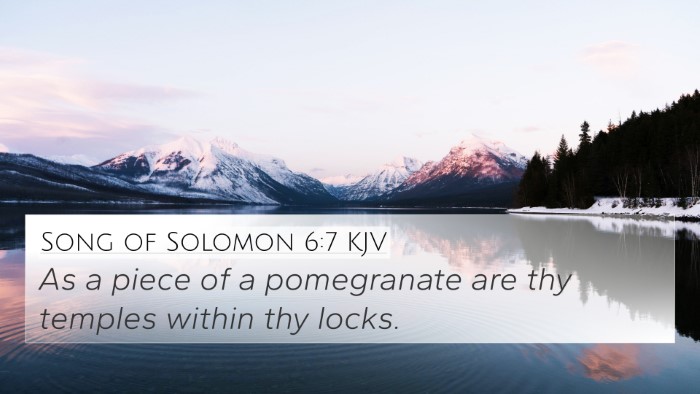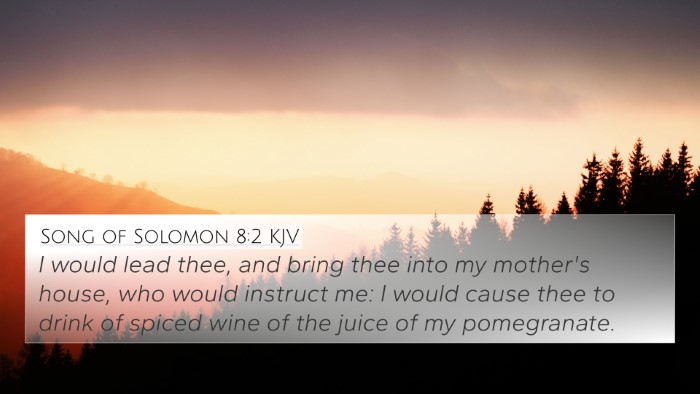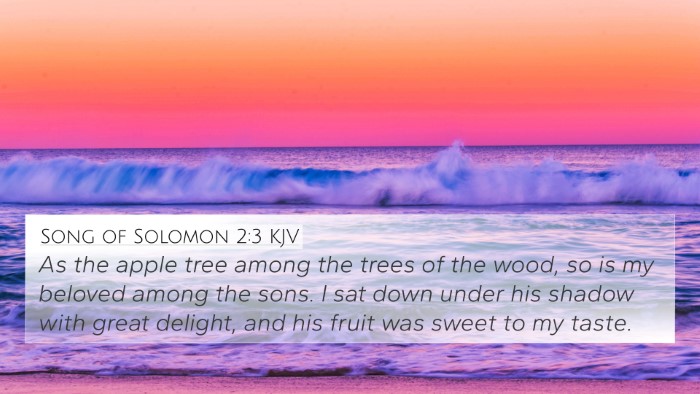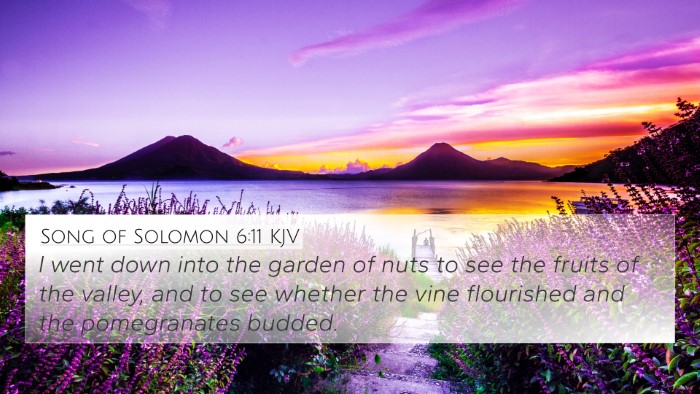Understanding Exodus 28:34
Exodus 28:34 states: "And a gold bell and a pomegranate, a gold bell and a pomegranate, upon the hem of the robe round about." This verse is part of God’s instructions to Moses regarding the garments of the High Priest, Aaron. The intricacies in the design and materials used carry significant spiritual meaning and symbolism, which can provide profound insights for believers today.
To comprehend this verse fully, we must explore it through the lens of respected public domain commentaries. Below is a summarization of insights drawn from the works of Matthew Henry, Albert Barnes, and Adam Clarke.
Symbolism of the Gold Bell and Pomegranate
Both the gold bell and the pomegranate serve symbolic purposes:
- Gold Bell: Represents the sound of the priest's activity before God. The ringing of the bells indicates the priest's presence as he enters the Holy Place, exemplifying the need for awareness of God's holiness and the seriousness of priestly duties.
- Pomegranate: Symbolizes fruitfulness and abundance. The pomegranate is often seen as a representation of the promised land and spiritual blessings that come from being in a covenant relationship with God.
Theological Implications
Commentators emphasize several theological aspects regarding Exodus 28:34:
- Holiness: The detailed instructions underscore the significance of holiness in approaching God. The High Priest must be adorned correctly to enter God's presence.
- Intercession: The sounds of the bells indicate the continual intercession for the nation of Israel, reflecting the role of Christ as our ultimate High Priest.
- Unity of Elements: The combination of bells and pomegranates stresses the unity between the spiritual (sound of bells) and the physical (fruitfulness). It signifies that worship requires both devotion and actions that bear fruit.
Cross References
This verse can be seen in connection to several other Bible verses to deepen the understanding of its meaning, including:
- Leviticus 8:7-9: Discusses the consecration of Aaron and the significance of his garments.
- Exodus 39:24-26: Reiterates the making of the robes and their ornamentation, providing more detail on the bells and pomegranates.
- Hebrews 5:4-6: Relates to Jesus as the high priest, called by God, fulfilling the priestly role established in the Old Testament.
- Revelation 1:6: Describes believers being made kings and priests unto God, linking the Old Testament priesthood with the New Testament church.
- Matthew 23:5: Points to the Pharisees who broadened their phylacteries, emphasizing the importance of not just external adornment but genuine righteousness.
- Galatians 5:22-23: Discusses the fruits of the Spirit, complementing the symbolism of the pomegranate.
- Exodus 25:31-40: Discusses the lampstand and its significance in the tabernacle, contributing to the theme of God’s light in the midst of His people.
- Philippians 4:17: Illustrates the act of fruitfulness in giving, furthering the theme of pomegranates as a sign of abundance.
- John 15:5: Jesus' teaching on the vine and branches connects with the idea of being fruitful in our spiritual lives.
- 1 Peter 2:9: Identifies believers as a royal priesthood, affirming the believer’s participation in the priestly tradition established in Exodus.
Thematic Connections and Analysis
When analyzing Exodus 28:34, one can recognize strong thematic connections that relate back to the entire narrative of the Bible:
- Priesthood: This verse clinches the understanding of a spiritual priesthood that finds its completion in Jesus Christ. The ceremonial aspects point towards the spiritual reality of Christ’s sacrificial role.
- Covenant Relationship: The ornaments on the priest’s garment symbolize the beauty of God’s covenant with His people, inviting deeper reflection on the continuity of God’s promises.
- Fruitfulness as Worship: The pomegranate is a consistent symbol of fruitfulness in Scripture, inviting analysis and reflection on how our lives can reflect spiritual abundance in our worship and devotion to God.
Conclusion
In summary, Exodus 28:34 encapsulates profound lessons about holiness, intercession, and the nature of God’s relationship with His people, articulated through the meticulous instructions for the High Priest’s attire. By utilizing tools for Bible cross-referencing and engaging in comparative Bible verse analysis, believers can uncover richer insights and connections within Scripture. This verse, along with its cross-references, illustrates the metanarrative of the Bible and culminates in the person of Jesus Christ, our ultimate High Priest. Studying such verses promotes a deeper understanding of both the Old and New Testament connections.
